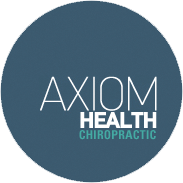
Our clients love us!
ever since my accident at work, I've been having intense headaches and feeling chronic pain. After 3 visits with Dr. Rudy Patel I'm 300% better!
Neck Stiffness
Whiplash injuries often occur during low-speed collisions, but low speeds translate to a lot of force. For example, if you are sitting in a stationary car that’s hit from behind by a car moving at just 10 miles per hour, the force from the collision can briefly put 9 Gs of force on your neck (a G is the gravitational “pull” of the earth). It’s not difficult to imagine how one or more structures of your neck could be injured under these circumstances.
Since headrests were first mandated for passenger cars in the United States over 40 years ago, the risk of neck injuries following rear-impact collisions has fallen by almost 20 percent. Studies suggest that proper adjustment of headrests could make even more of a difference.
Improved Imaging Tests
Typical whiplash symptoms include pain in the neck, jaw, shoulder, or arm; headaches; dizziness; ringing of the ears (tinnitus); and sometimes difficulty with memory and concentration.
Sometimes, there is a psychological component. Research suggests that a person’s fear of re-injury may lead to a physical reaction known as muscular bracing, in which the body holds itself in a rigid posture in an effort to protect the injured area from further pain. Unfortunately, muscular bracing only prolongs recovery.
Imaging studies such as x-rays or computed tomography (CT) or magnetic resonance imaging (MRI) scans may not be done right away unless the doctor suspects damage to the nerve roots or spinal cord, which can lead to permanent
What has frustrated doctors and patients alike is that in many whiplash cases, imaging studies cannot identify the source of chronic pain. Some people with persistent pain have perfectly normal imaging test results, while others whose imaging tests show abnormalities are pain-free. So, it’s not as straightforward as one might think to link an imaging abnormality to symptoms, let alone to whiplash trauma.
Improvements in imaging technology are beginning to clear up some of the ambiguity. In a study published in the journal Spine, researchers used high-resolution MRIs to look at the cervical spines of patients with a history of chronic pain whose post-whiplash x-rays were normal. They found significantly more damage to soft tissues, particularly ligaments, in the whiplash patients, compared with patients who had no history of neck injury. Furthermore, the amount of damage correlated with the patient’s self-reported assessments of pain and ability to perform everyday activities.

Sonia Chabra